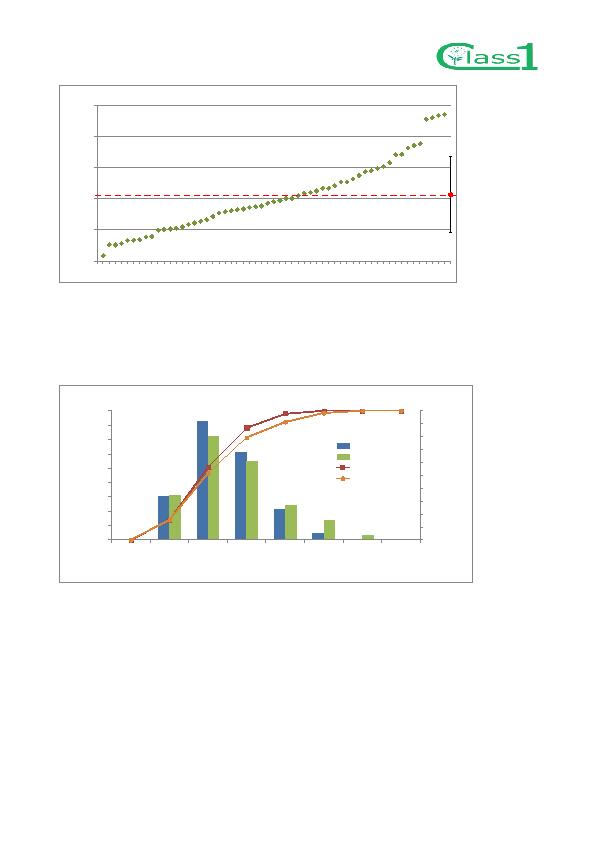
kWh/mē year.
both data sets: the 10 kWh/mē/year consumption class is the most significant (between 35% and 40% of
the flats are in this class), followed by the 15 kWh/mē/year.
Electric Energy Demands
electrical devices. A standard energy consumption of the ventilation system was calculated as described
above in METHODS and resulted in an annual consumption of 735-835 kWh/h depending on the size of the
apartments.
An overview of the total electric energy consumption for the 56 flats with 3 years data is shown in Figure
55. The consumption varies between about 1000 kWh/y and 4500 kWh/y, with an average value of about
2200 kWh/y.
Figure 56 shows that the frequency peak consumption class remains 2000 kWh/y both considering 3 years
and 1 year data, but considering the dataset with a higher number of flats (last year data) the second
u
i
o
[
k
Wh
F
r
e
r
e
y
% last year
Cum.% 3 years
Cum.% last year